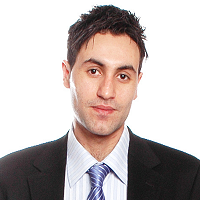 By Alex Tate, Health IT Consultant, CureMD
By Alex Tate, Health IT Consultant, CureMD
Twitter: @CureMD
Twitter: @alextate07
Communication has always been pivotal to the success of any business, any project and any pursuit. The effectiveness of communication within a team can alone decide the fate of the entire activity. Managers from every industry have always credited clear and coherent communication as one of the primary reasons for their excellent performance. According to a global research conducted by Harvard Business Review in 2013, 73% of people voted effective communication as an essential factor to a successful enterprise (HBR, 2013). Executives from different industries participated in this research – 8% of them being from healthcare. Plus, communication takes place, all the time. Some experts estimate that an average top-level employee in a firm spends around 75% to 80% of total working hours in communicating with peers or sub-ordinates. Therefore, effective communication is the cornerstone of any firm, including a modern healthcare practice.
According to MIT’s Human Dynamics Laboratory, among all forms of communication, face-to-face communication is the most effective form of communication (Tanzeem Choudhury, 2003) – and in a practice, this form of communication is predominantly in use. Patients are usually a little nervous about their health condition and what the future holds for them, which is pretty natural. It is the responsibility of the provider to listen to the queries of his customer and satisfy him – and that is where the communication skills of the provider are under litmus test. The provider needs to take into consideration both the verbal and non-verbal (interpersonal) cues of the patient and comprehend what the patient exactly wants to say. If both of them can communicate effectively, there is a higher probability that the patient will have better healthcare experience and lesser chance of them dropping out of treatment, eventually generating better word-of-mouth for the provider.
Other than the patient, the provider also needs to communicate with his staff members and front desk representatives to see if the administrative matters are running smoothly. The staff members are pivotal for the success of the practice. They not only take care of every administrative need of the practice, allowing the provider to focus on his patients but also are the first ones to greet the patient when he enters the premises of that specific practice. Therefore, a provider needs to be effective in his communication with the staff members to ensure that they have everything under control. Healthy discussions between the provider and his staff make the later feel more valued to the practice and urge them to go an extra mile to ensure that the practice is performing at its optimum level. Contrary to that, inadequate levels of communication with the staff can be disastrous, for it will not only reduces their levels of job satisfaction but also results in the employees stepping down, resulting in costs of re-hiring the right people. Therefore, a provider needs to understand that his ability to be an effective communicator is the cornerstone for the success of his practice.
Since the advent of Obamacare, modern health IT and the need for providers to ditch conventional data entry methods and switch towards a digitalized EHR systems, the communication channels have also changed. Back in the days of conventional practice, the patients used to meet their provider more frequently. But now, using modern technology, patients can access their lab reports, prescriptions and other important data on their ‘portals’. Depending upon the features of that portal, a patient can even send messages to his provider. Now that the provider cannot physically see the patient, he has to be more emotionally intelligent to understand the mental condition of the patient and deal with him accordingly.
The intensive use of technology within the practice has also created a situation where providers are unable to give complete attention to their patients because they also need to use their computers during the practice hours. According to a study conducted by the American Medical Association in 2016, for every one hour of face-to-face communication with the patients, the provider has to spend an additional two hours looking at his computer screen (Sinsky, 2016). This means, effectively, a provider can give only 33% of his time to the patient. Although the purpose of using a computer during practice is solely to deliver better healthcare to the patient, it can create a situation where a patient may feel that the provider is not giving him the due attention. With the exponential increase in the number of patients, the providers are expected to see more patients than they used to see, say ten years back. In such a scenario, the provider needs to maintain a delicate balance between his screen time and patient communication and try having the best of both worlds.
In a nutshell, effective communication is a pretty decisive factor in a practice. Effective communication enables the practices to maintain amicable relationships with patients, office staff and other stakeholders, resulting in business growth and better revenues. A provider should use his instincts to judge the feelings of patients and staff members and communicate with them accordingly. This will ensure that every stakeholder of the practice remains on the same page and there are no confusions or doubts in anyone’s mind. However, if the provider does not effectively communicate with the people around him, it will only create a feeling of detachment and disarray and may dissolve the practice altogether. Hence, effective communication is that adhesive that keeps the practice intact and provides the best healthcare experience.
